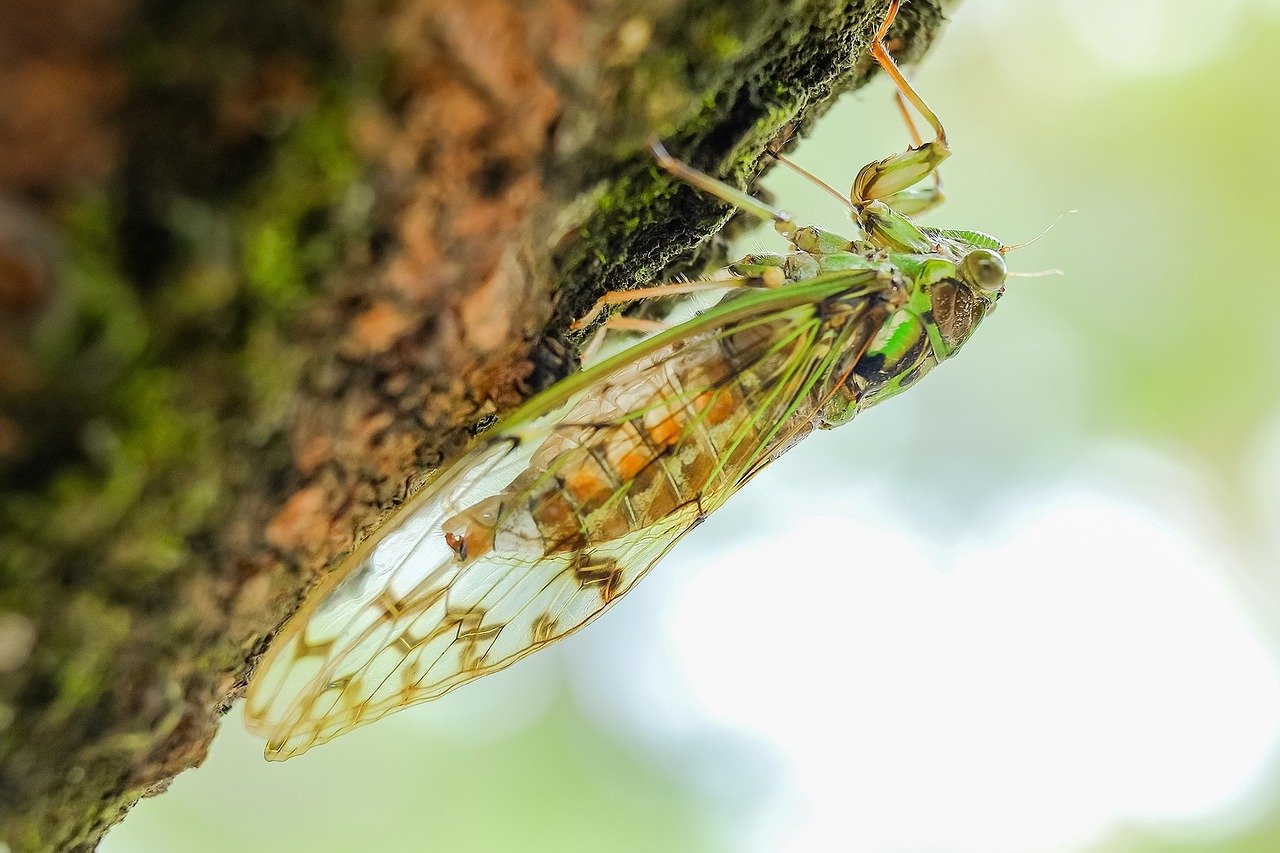
Ohio Car Driver Crashes into Utility Pole after a Cicada Interferes with Driving
The cicadas have caused trouble this year, including causing a car crash after one of the bugs flew into the window and struck the driver in the face.
The Cincinnati Police Department shared on Twitter that a single-car crash happened on 2600 Riverside Drive on June 8, after a driver was struck in the face by a cicada that flew through the car window.
The insect hit the driver in the face, which resulted in the motorist veering off the road and hitting a utility pole. The vehicle was significantly damaged, but luckily, the driver did not suffer any serious injuries.

A close up of police tape in front of a few police officers. | Photo: Shutterstock
Cicadas are making themselves known this year as the red-eyed insects usually live underground but appear every 17 years to mate. This year's group is called Brood x and is made up of three different types of bugs.
Michael Raupp, an entomology professor from the University of Maryland, stated that their loud buzz is all because of romance. He explained:
"This is the male cicada trying to convince that special someone that she should be the mother of his nymphs. He's putting on his very best performance."

The Cincinnati Police department tweeted about the single car accident. 2021. | Photo: Twitter/CincyPD
The insects are mostly harmless but Today shared that the cicadas have caused some serious trouble this year. Besides this Ohio resident's car crash, the insects reportedly delayed President Joe Biden's first foreign trip.
The outlet explained that the insects caused mechanical issues on the plane. In addition, the issues caused a delay in a White House press corps flight overseas during Biden's first foreign trip. They also caused issues at this year's PGA tour.
Although a few insects appear from mid to late April, the true large-scale emergency started in May.

A close up of a cicada perched on a tree. | Photo: Pixabay/Yukie Chen
At the beginning of June, the insects disrupted the Memorial Tournament in Dublin, Ohio. The swarms of insects are so big that The National Weather Service has seen the groups of insects on their radar.
Although the loud insects can cause mischief, some find it fascinating that they only emerge every two decades. Raupp said he finds them fantastic because when they do come out of the ground it is an amazing experience:
"They only come out once every 17 years for a spectacle unparalleled anywhere else on the planet. They're just unique, special creatures."

Holes made from Cicadas during mating season this year. | Photo: Twitter/cicadamania
According to CNN, this is the biggest emergence of cicadas since 2004. The brood, also known as the Great Eastern brood, was expected to appear in the areas stretching from Tennessee to New York. They are expected to last towards the end of June and then reappear in 2038.
The insects start to emerge when the soil hits 64 degrees Fahrenheit. So, although a few insects appear from mid to late April, the true large-scale emergency started in May.

The cicada swarm is so large it is picked up by weather radars. | Photo: Twitter/nerdbotmedia
The bugs are extremely interesting. They belong to a group of insects that are different from other bugs as both the nymphs and adults have a beak used to drink plant fluids. Adult cicadas also have two sets of wings.
In North America, there are known to be over 190 varieties of cicadas, and globally there are 3390 of them. Although most cicada species come out every year, the US has a type of cicada that stays underground for either 13 or 17 years.
